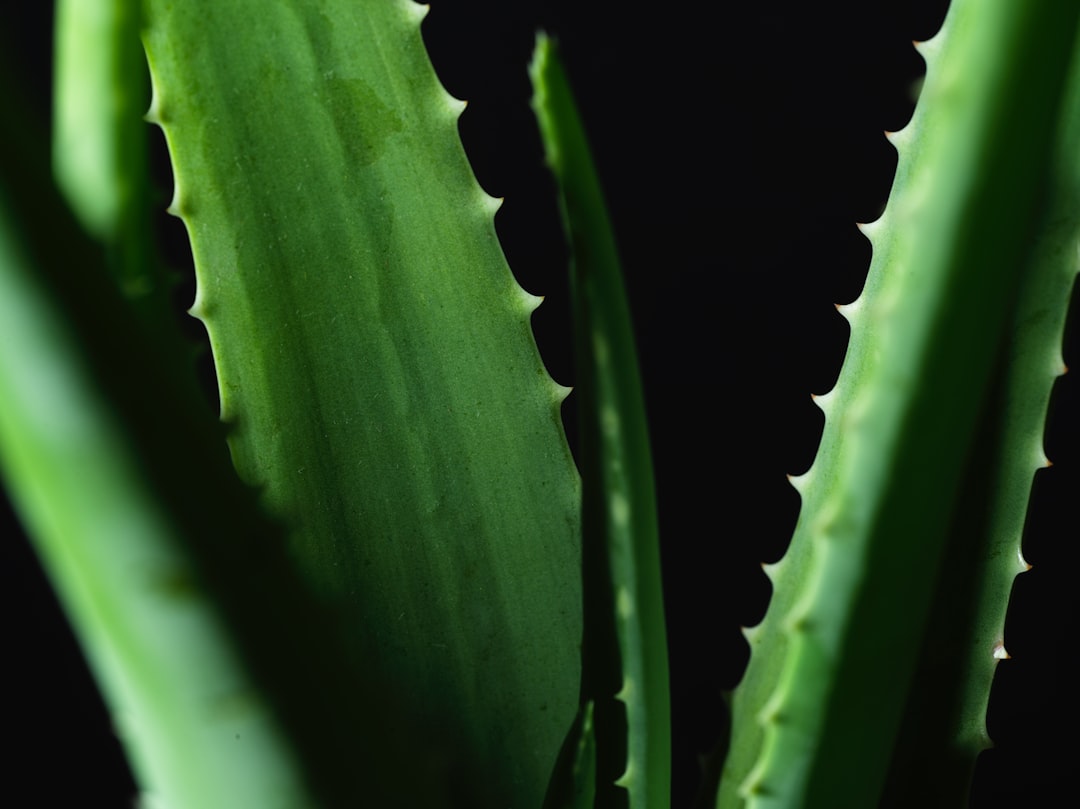Ingrown hairs are a common skin condition that occurs when hair grows back into the skin instead of rising up from it. This can lead to inflammation, redness, and sometimes even infection. You may notice small, raised bumps on your skin, often accompanied by discomfort or itching.
Understanding the mechanics behind ingrown hairs can help you take proactive steps to prevent them. The process begins when hair follicles become clogged with dead skin cells, oil, or other debris.
When hair is removed through methods like shaving or epilating, it can sometimes grow back at an angle or curl back into the skin. This is especially common in individuals with curly or coarse hair. The result is a painful bump that can become inflamed and lead to further complications if not treated properly.
Recognizing the signs of ingrown hairs early on can help you manage them effectively and reduce the risk of developing more severe issues.
Key Takeaways
- Ingrown hair occurs when hair curls back or grows sideways into the skin, leading to inflammation and irritation.
- Before epilating, it’s important to cleanse and exfoliate the skin to remove dead skin cells and prevent ingrown hair.
- After epilating, treat ingrown hair immediately by applying a warm compress to the affected area to reduce inflammation.
- Regular exfoliation helps prevent ingrown hair by removing dead skin cells and allowing hair to grow freely.
- Moisturizing the skin after epilating helps soothe irritation and reduce the risk of ingrown hair.
Preparing the Skin Before Epilating
Cleanse the Area
Begin by thoroughly cleansing the area to remove dirt, oil, or makeup. This ensures your skin is clean and ready for epilation, making the process smoother. Consider using a gentle exfoliating scrub to remove dead skin cells, which can help prevent clogged hair follicles.
Soften Your Hair and Skin
Next, soften your hair and skin by taking a warm shower or applying a warm compress to the area for a few minutes. The heat opens up your pores, making hair removal easier and reducing the likelihood of hair breaking off unevenly.
Additional Tips for Sensitive Skin
If you have sensitive skin, consider applying a soothing gel or lotion to calm any irritation before epilating. By following these steps, you’ll not only make the process more comfortable but also significantly decrease the chances of experiencing ingrown hairs afterward.
Treating Ingrown Hair Immediately After Epilating
Once you’ve completed the epilation process, it’s essential to address any potential ingrown hairs immediately. Even with the best preparation, some hairs may still choose to grow back into the skin. If you notice any bumps or irritation right after epilating, don’t panic; there are steps you can take to treat them effectively.
Start by applying a cool compress to the affected area to reduce inflammation and soothe any discomfort. This simple step can provide immediate relief and help calm your skin. In addition to using a cool compress, consider applying an over-the-counter hydrocortisone cream or an anti-inflammatory lotion to the area.
These products can help alleviate redness and swelling while promoting healing. If you spot an ingrown hair that is particularly stubborn, you might be tempted to dig it out with tweezers; however, this can lead to infection or scarring. Instead, gently exfoliate the area with a soft washcloth or an exfoliating scrub to encourage the hair to break through the skin’s surface naturally.
Using Exfoliation to Prevent Ingrown Hair
| Exfoliation Method | Frequency | Effectiveness |
|---|---|---|
| Physical Exfoliation (scrubs, brushes) | 2-3 times per week | Effective in removing dead skin cells |
| Chemical Exfoliation (AHAs, BHAs) | 1-2 times per week | Penetrates deeper into the skin for better results |
| Exfoliating Gloves | Every other day | Gentle exfoliation for sensitive skin |
Exfoliation plays a vital role in preventing ingrown hairs by keeping your skin smooth and free from dead skin cells that can clog hair follicles. Regularly exfoliating your skin helps to remove these dead cells and promotes healthy hair growth. You should aim to exfoliate at least once or twice a week, depending on your skin type and sensitivity.
There are various methods of exfoliation available, including physical scrubs, chemical exfoliants, and even dry brushing techniques. When choosing an exfoliant, opt for one that suits your skin type. If you have sensitive skin, consider using a gentle scrub with natural ingredients like sugar or oatmeal.
For those with more resilient skin, a chemical exfoliant containing alpha-hydroxy acids (AHAs) or beta-hydroxy acids (BHAs) can be effective in sloughing off dead skin cells without harsh scrubbing. Incorporating exfoliation into your skincare routine not only helps prevent ingrown hairs but also leaves your skin looking radiant and feeling smooth.
Moisturizing to Soothe the Skin
Moisturizing is another crucial step in maintaining healthy skin and preventing ingrown hairs. After epilating or exfoliating, your skin may feel dry or irritated; applying a good moisturizer can help restore hydration and soothe any discomfort. Look for products that contain soothing ingredients such as aloe vera, chamomile, or calendula, which can calm inflammation and promote healing.
A lightweight lotion or gel is often ideal for post-epilation care as it absorbs quickly without clogging pores. In addition to immediate post-epilation care, maintaining a regular moisturizing routine is essential for overall skin health. Dry skin can lead to increased friction during hair growth, making it more likely for hairs to become trapped beneath the surface.
Make it a habit to apply moisturizer daily, especially after showering or bathing when your skin is most receptive to hydration.
Applying Topical Treatments for Ingrown Hair
If you find yourself dealing with persistent ingrown hairs despite your best efforts at prevention, topical treatments can provide relief and promote healing. There are several over-the-counter products specifically designed to treat ingrown hairs and their associated symptoms. Look for creams or gels containing salicylic acid or glycolic acid; these ingredients help exfoliate the skin and encourage trapped hairs to break free.
In addition to these active ingredients, some products may contain soothing agents like tea tree oil or witch hazel, which have natural anti-inflammatory properties. Applying these treatments directly to affected areas can help reduce redness and swelling while promoting faster healing. If you’re unsure which product is best for you, consider consulting with a dermatologist who can recommend suitable options based on your specific needs.
Seeking Professional Help for Severe Ingrown Hair
In some cases, ingrown hairs can become severe and lead to complications such as infections or cysts. If you notice persistent pain, swelling, or pus-filled bumps that do not improve with home treatment, it may be time to seek professional help. A dermatologist can assess your condition and provide targeted treatments that may include prescription medications or procedures to remove deeply embedded hairs.
Professional treatments may involve techniques such as laser hair removal or electrolysis, which can significantly reduce the occurrence of ingrown hairs in the future. These methods target hair follicles directly and can provide long-lasting results compared to traditional hair removal methods. If you find yourself frequently battling ingrown hairs despite diligent care, discussing these options with a dermatologist could be a game-changer for your skincare routine.
Preventing Ingrown Hair in the Future
Preventing ingrown hairs requires a combination of proper skincare practices and mindful hair removal techniques. Start by choosing the right hair removal method for your skin type; if shaving tends to cause issues for you, consider alternatives like waxing or laser treatments that may be less likely to result in ingrown hairs. Always use sharp blades when shaving and avoid going over the same area multiple times to minimize irritation.
Incorporating regular exfoliation and moisturizing into your routine will also go a long way in preventing future ingrown hairs. Make it a habit to check your skin regularly for any signs of irritation or bumps so that you can address them promptly before they develop into more significant issues. By being proactive about your skincare and hair removal practices, you can enjoy smoother skin while minimizing the risk of pesky ingrown hairs in the future.
In conclusion, understanding ingrown hairs and taking steps to prevent them is essential for maintaining healthy skin. By preparing your skin properly before epilating, treating any immediate issues afterward, and incorporating regular exfoliation and moisturizing into your routine, you can significantly reduce the likelihood of experiencing ingrown hairs. Should problems persist despite your best efforts, don’t hesitate to seek professional advice for tailored solutions that work best for you.
With diligence and care, you can achieve smooth, healthy skin free from the discomfort of ingrown hairs.
After epilating ingrown hair, it is important to take proper care of your skin to prevent further irritation. One helpful article on this topic can be found on the In Laser Hair Removal blog. The article provides tips on what products to apply after epilating to soothe the skin and prevent ingrown hairs. For more information on laser hair removal services or to schedule a consultation, you can visit the In Laser Hair Removal contact page. Additionally, you can review their privacy policy to understand how your personal information is protected when using their services. Click here to read the article on post-epilation care.
FAQs
What is epilating?
Epilating is a hair removal method that involves using a device to pull hair out from the root.
What are ingrown hairs?
Ingrown hairs occur when a hair curls back and grows into the skin instead of rising up from it.
What should I apply after epilating ingrown hair?
After epilating ingrown hair, you can apply a soothing and moisturizing lotion or cream to help reduce irritation and prevent further ingrown hairs. You can also use products containing salicylic acid or glycolic acid to exfoliate the skin and prevent ingrown hairs.
Are there any specific products recommended for after epilating ingrown hair?
There are specific products designed to treat and prevent ingrown hairs, such as exfoliating scrubs, ingrown hair serums, and soothing lotions. Look for products that contain ingredients like salicylic acid, glycolic acid, and tea tree oil.
How often should I apply products after epilating ingrown hair?
You can apply products after epilating ingrown hair as often as needed, but it’s generally recommended to moisturize and exfoliate the skin daily to prevent ingrown hairs.








